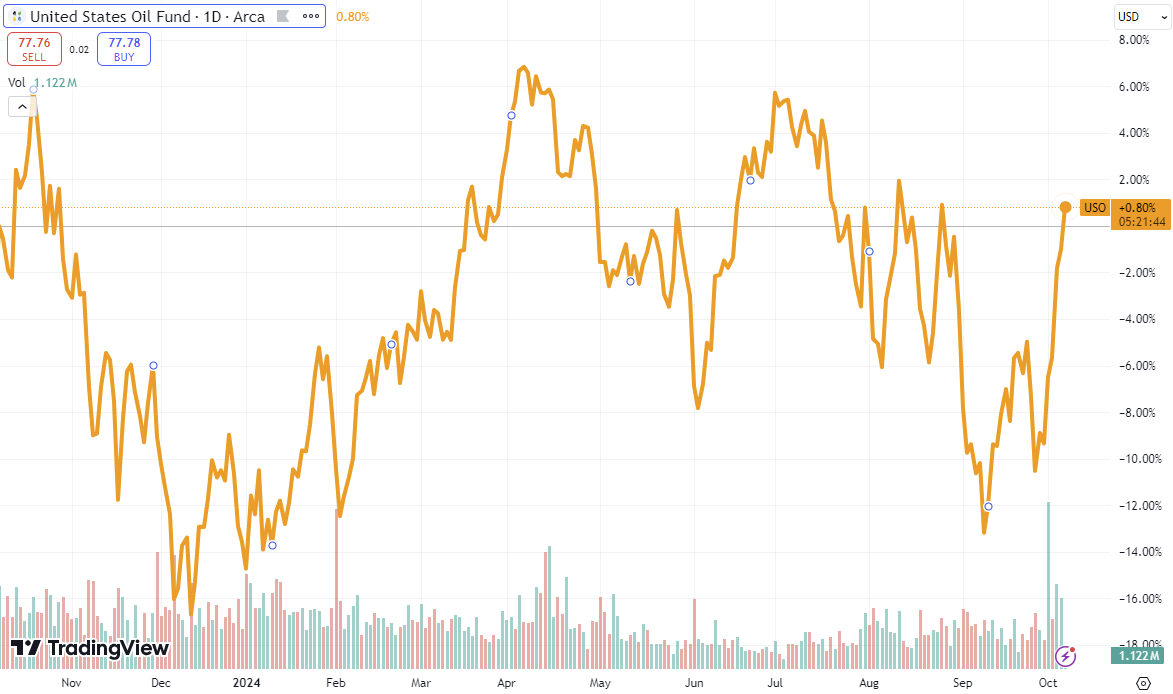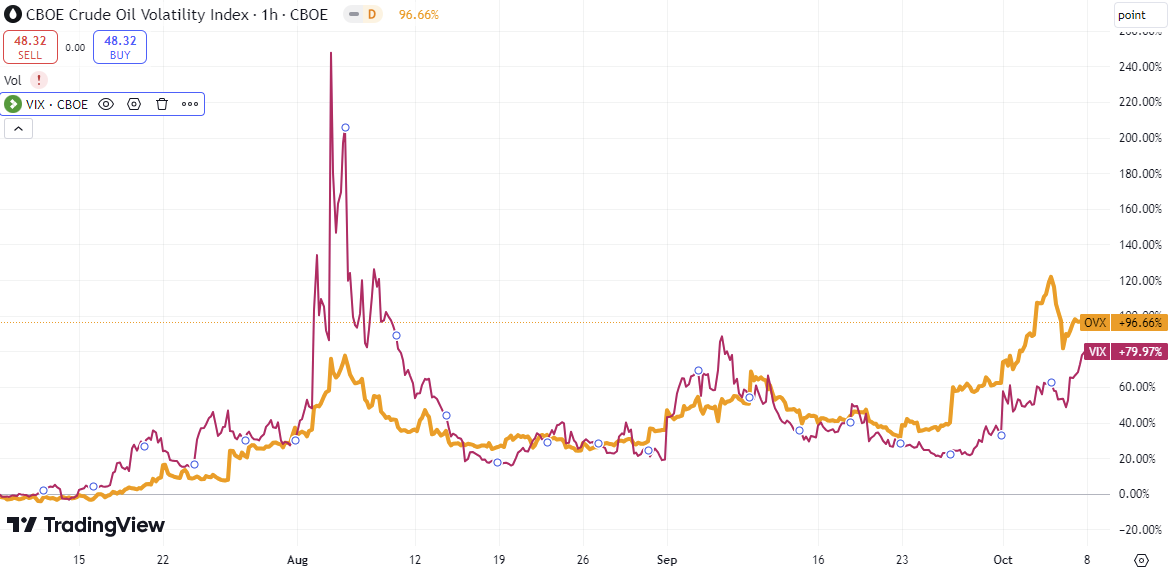Oil prices up 8% in a week? Tempting right? But this isn’t your average stock market hustle.
Retail traders have been jumping into oil ETFs since tensions flared between Iran and Israel. The United States Oil Fund ETF has seen a sudden increase in volumes, driven mostly by guest investors (folks who chase the likes of Nvidia or Tesla).
Let’s take a deep breath and actually have a look at that ETF – the world’s biggest – and its zigzag run over the past year. The reason it has been such a wild ride is because the underlying asset, oil, is a physical commodity that has to be pumped out of the ground and shipped around the world.
It’s also critical to everything from keeping the lights on to keeping cars on the road, to keeping factories humming, which makes it highly sensitive not only to economic demand but to literally anything that could interrupt or disrupt supply.
There have been a ton of disruptors lately but this spike was caused by fears the Middle East conflict that’s raged for a year now, will spread to the Gulf itself.
Look at this rollercoaster 🎢:

So far, so obvious, but let’s add another layer of complexity. Take a look at the events of the past year and their actual impact on oil:
- Number 1 is Israel’s war in Gaza. Even before the latest tensions, there were repeated attacks on ships in the Red Sea, a crucial artery for the global oil trade. You’d think these events would spike oil prices, but no.
- OPEC+, responsible for 40% of global oil production, has also been cutting supply for over a year to try to boost the price, with little effect.
- This is because US oil production hit record highs in 2023 and is set to do the same this year.
Btw, OPEC+ is bringing those barrels back to the market in December, which means even more supply and potential downward pressure on prices.
Confused yet?
Ample supply means it could take much more than fear of war to keep oil prices on an uptrend. And that doesn’t bear thinking about.

The bottom line
To cut a long story short, volatility in oil trading has been increasing, making it more unpredictable than the S&P 500. So, if you’re chasing a quick buck, you may get caught out.
And if you’re looking for long-term growth, there are better investments out there.






